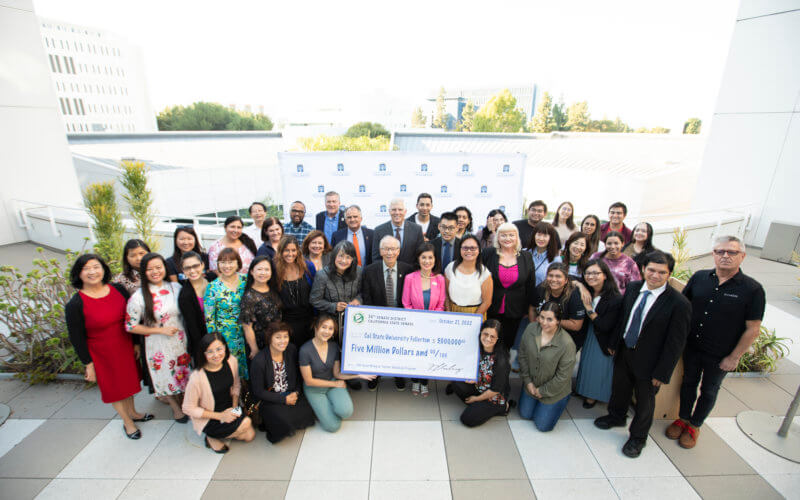


To deal with the statewide shortage of K-12 educators to educate in Asian languages, Cal Condition Fullerton’s College of Training is main the California Point out College Asian Language Bilingual Instructor Instruction Application Consortium.
Funded by the California Legislature, the target of the $5 million effort and hard work is to improve the quantity of credentialed teachers with Asian bilingual authorization to educate Vietnamese, Mandarin, Cantonese, Korean, Japanese, Hmong, Tagalog and Khmer (Cambodian).
“The consortium signifies a collective effort and hard work to help and develop Asian language bilingual instructor schooling plans not only in the CSU but statewide,” reported consortium software director Natalie Tran, professor of academic management and secondary education and learning in CSUF’s Faculty of Education.
“This funding benefits CSU bilingual authorization instructor candidates, faculty and university districts throughout the condition. The consortium plays a essential part in addressing the growing calls for for Asian twin-language immersion plans and trainer shortages in Orange County and California as a entire.”
With a bilingual authorization, academics can present instruction in both equally English and an additional language, this sort of as Korean or Vietnamese.
“There is a wonderful want for bilingual instructors who can talk with learners and dad and mom in their native language,” said Fernando Rodriguez-Valls, professor of secondary education and learning, the coordinator of CSUF’s bilingual authorization program.
CSUF is distributing money to the other seven CSU campuses in the consortium for the 5-yr system, Tran reported. Participating CSU campuses are Cal Condition Dominguez Hills, Cal State Lengthy Seaside, Cal State LA, Cal Poly Pomona, San Diego Point out, San Jose State and Stanislaus Condition.
Tran anticipates that much more CSU campuses will be a part of the consortium all over the grant cycle. Funds will be employed for scholarships, university student outreach and recruitment, and to help consortium school and administrative functions.
Current and future instructors enrolled at CSU campuses will profit from the consortium method by way of scholarships.
Instructor candidates interested in earning a training credential and bilingual authorization in Asian languages are eligible for a $20,000 scholarship. Latest teachers can get both a $2,200 scholarship or enroll in the required courses for absolutely free, Tran stated.
Through the consortium, enrolled students can get classes at other campuses to comprehensive their bilingual authorization, Tran reported.
Currently, CSUF’s School of Training features Asian language bilingual authorization courses only in Vietnamese, Korean and Khmer.
In CSUF’s bilingual authorization system, about 20 pupils complete the Asian language authorization just about every calendar year, Tran reported.
“We anticipate this range to grow with an growing quantity of faculty districts providing Asian language twin-language immersion programs in the location and across the state,” she included.
In Orange County, for instance, Westminster School District, Garden Grove Unified School District and Anaheim Union Substantial College District all provide Vietnamese dual-language systems.
Anaheim Elementary School District and Fullerton College District give programs in Korean.
Mandarin dual-language programs are made available in Orange Unified Faculty District, Newport-Mesa Unified College District, Capistrano Unified School District, and quickly, in Anaheim Elementary Faculty District, Tran said.
CSUF’s National Resource Heart for Asian Languages, directed by Tran, in collaboration with California Division of Training funded initiatives, these types of as EL Increase!, also gives qualified growth for Asian language teachers.


